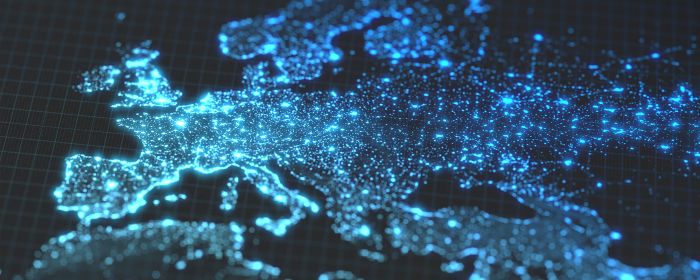On Monday July 12, the European Union (EU) foreign ministers announced the launch of a global infrastructure investment strategy set to begin in 2022, called “Globally Connected Europe.” The Council of the European Union, the institution within the EU responsible for adopting legislation, indicated that the initiative is meant to be a “geostrategic approach to connectivity,” and seeks to promote EU values and advance the EU’s economic, development, security, and foreign policy goals. The initiative is meant to be sustainable, comprehensive, and rules-based.
Sound familiar? This announcement comes almost exactly one month after the G7 announced a global infrastructure initiative titled Build Back Better World, or B3W. The G7 members presented the B3W as a partnership that is values-driven, sustainable, transparent, and based on good governance. They also presented it as a rival to China’s infrastructure project, the Belt and Road Initiative (the BRI).
The EU’s strategy document makes no direct mention of China. And yet, many argue that this project is, similar to the B3W, a counter to the BRI. An anonymous EU diplomat who reportedly helped draft the document stated that the strategy “has China written all over it.” German Foreign Minister Heiko Maas told reporters after the meeting that “We see China using economic and financial means to increase its political influence everywhere in the world. It’s useless moaning about this, we must offer alternatives.” In the span of one month, these alternatives have arisen – the BRI has gone from having little competition to two significant multilateral competitors.
What is a “Globally Connected Europe”?
The strategy document, which was drafted by the Council and details the initiative, states that the COVID-19 pandemic has accentuated the need for quality infrastructure investments. However, large-scale infrastructure projects are often difficult to fund, which is where the EU initiative is supposed to come in. “Globally Connected Europe” aims not only to mobilize funding for infrastructure investments but also to create regulatory frameworks for investment – in order to ensure a “level playing field” and “predictable international norms.” Again, similar to the B3W, which aims to promote “good governance” and “strong standards.”
In terms of implementation, the Council names various potential financing schemes for these “connectivity investments,” including public financing tools (e.g. loans), export credits, and joint financing models. The main avenue for financing projects, however, will be through the private sector. There were no additional details on financing, such as how the private sector funds would be acquired and dispersed, what the conditions of the loans would be, and how exactly schemes such as export credits and joint financing models would work.
Building upon Japan and India partnerships
In detailing the announcement, the Council made clear that this initiative would take advantage of and operationalize the EU’s already-existing connectivity partnerships with India and Japan. Connectivity partnerships are understood as two parties expressing commitments to implementing standards on people-to-people exchanges, energy, transport, and digital projects that both sides have agreed on.
The EU made an agreement with Japan in 2019, to establish a “connectivity plan” aimed at building infrastructure and creating “sustainable, rules-based connectivity from the Indo-Pacific to the Western Balkans and Africa.” Earlier this year, the EU made a very similar agreement with India to develop a “connectivity partnership,” focused on building joint infrastructure projects around the world – mostly in Africa.
Both of these partnerships were widely considered attempts at countering the BRI, especially as Japan and India have been rather vocal in their disproval of the Chinese initiative, due to its lack of transparency and the debt-trap diplomacy that the BRI is said to promote.
There were no additional details provided on what taking advantage of these two connectivity agreements would look like. However, one can assume that it means infrastructure partnerships are to be expected between Japan and India.
In addition to these existing partnerships with India and Japan, the Council's strategy document also refers to a potential Connectivity Partnership with ASEAN and deeper collaboration with the United States.
A focus on digital infrastructure
Looking at the B3W, “Globally Connected Europe,” the EU-Japan agreement, and the EU-India agreement, there is one area of focus that all initiatives have adopted – digital infrastructure. The EU’s agreements with Japan and India were specifically aimed at coordinating transport, energy, and digital infrastructure projects. The G7’s B3W listed digital technology as one of its four key areas of focus, and this new EU initiative will be important in achieving the EU’s other objectives, most notably to become climate neutral by 2050 and to strengthen its digital sovereignty.
Digital infrastructure is defined as the resources and technologies that are needed for the use of data, the Internet of Things (IoT), computerized services, telecommunications, broadband services, etc. It is an area that has seen significant growth and attention recently. In fact, its recent rise is attributed by many to the COVID-19 pandemic, as much of the world went virtual. A managing director at ING Bank, Alistair Higgins, stated that “Infrastructure is arguably seeing a renewed focus on new technologies not seen since the 19th-century railway boom.”
The need for digital infrastructure is only expected to grow further in the coming years, with the International Energy Agency predicting global internet traffic to grow by 50 per cent by 2022, and Cisco predicting that there will be 5.3 billion internet users by 2023, up from 3.9 billion in 2018 (a 35 per cent increase).
While this increased focus on digital infrastructure is not surprising, what remains to be seen is how it will unfold and what effects it will have. Digital infrastructure can bring about increased productivity, economic growth, innovation, and sustainability. But according to the Asian Infrastructure Investment Bank (AIIB), the problem is that there is a large digital infrastructure funding gap in Asia, with estimates by the Asian Development Bank (ADB) and the World Economic Forum (WEF) ranging from C$100B to C$300B respectively.
If funding is the problem, then “Globally Connected Europe” and B3W could certainly help fix it, and the impacts on economic growth and technological innovation could be significant. But again, it is worth emphasizing that the details of what this focus on digital infrastructure will look like remains to be seen – it could only be that a small portion of the initiatives’ funds goes towards digital infrastructure.
Questions, critiques, and what to keep in mind
Ultimately, the EU’s infrastructure initiative is very similar to the B3W in the level of details provided about its expected implementation. There is no elaboration on funding mechanisms, loan conditions, specific projects, or target countries. Similar to the B3W, the lack of details brings about skepticism over whether the initiative will come to fruition, or what it will look like if it does.
An important aspect to keep in mind when evaluating the initiative’s potential success is the EU’s overall divergent approach towards China. French President Emmanuel Macron and German Chancellor Angela Merkel have been very hesitant to speak out against China. Both Germany and France have emphasized the importance of collaboration with China, arguing that the country’s assistance is crucial in a post-COVID-19 economic recovery. After the B3W announcement at the G7, Angela Merkel stated she did not want these efforts to be named as “anti-Chinese” and Emmanuel Macron stated he wanted to “avoid confrontation” with China. Differing viewpoints on China by different members of the initiative could potentially impact how effective the initiative becomes. If countries are pushing different approaches, it could be challenging to come to a consensus that all members approve of – which could subsequently make pushing the initiative forward more difficult.
There is also the overarching question of how this initiative will interact with the B3W – and how both will coexist with the BRI. Bearing in mind the lack of information released on both plans, so far the EU’s plan and the G7’s initiative both seem very similar in their goals, values, and approach. This brings about the question of whether the two initiatives will be competitors or partners. The argument could be made that if both multilateral groups work as partners, together they would make for a stronger alternative to China’s BRI – and potentially be more effective in lessening the infrastructure gap.
It is significant that over the course of one month, we have seen such similar infrastructure initiatives emerge from two strong multilateral bodies. How the EU, the G7, and China will manage competing infrastructure funds will be something to keep an eye on. The extent of these initiatives’ digital infrastructure investment, in particular, should also be monitored in the coming months, as that could have important impacts on countries’ economies and their potential for technological innovation. Overall, the EU is the latest party to have thrown its hat into the infrastructure ring – and it will certainly be interesting to see how it plays out.





